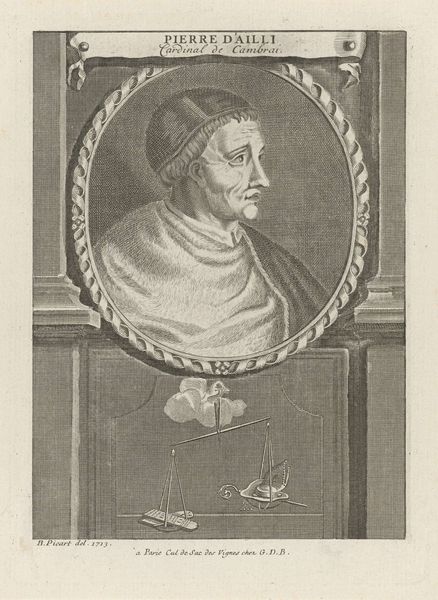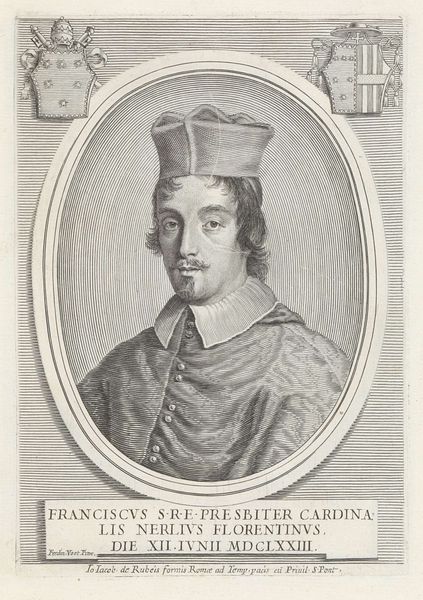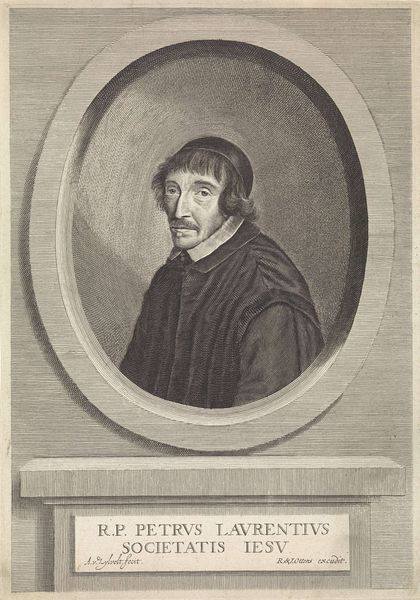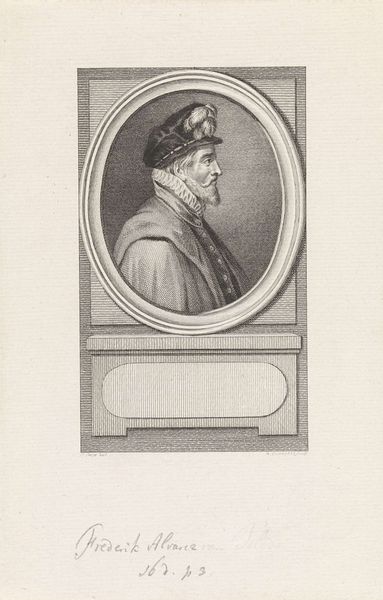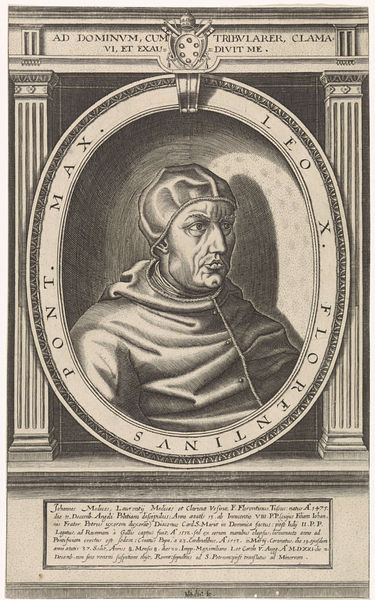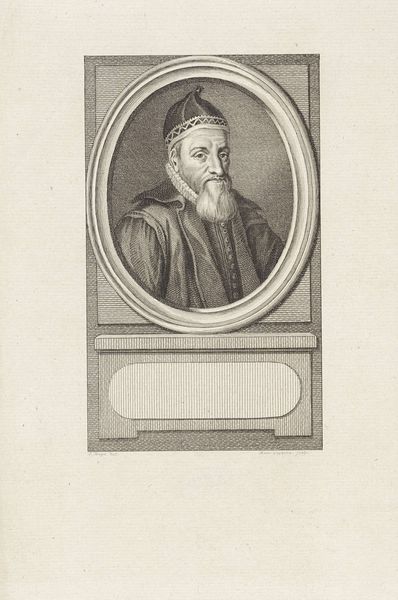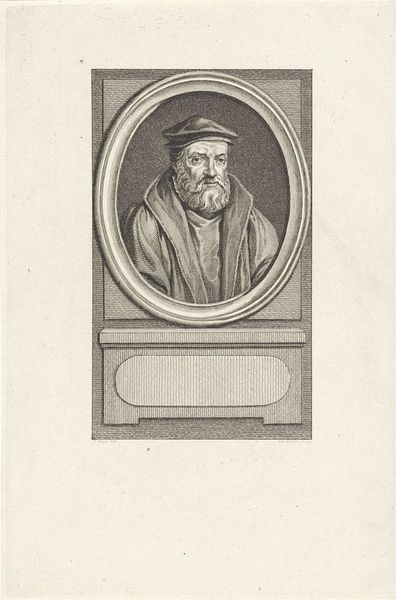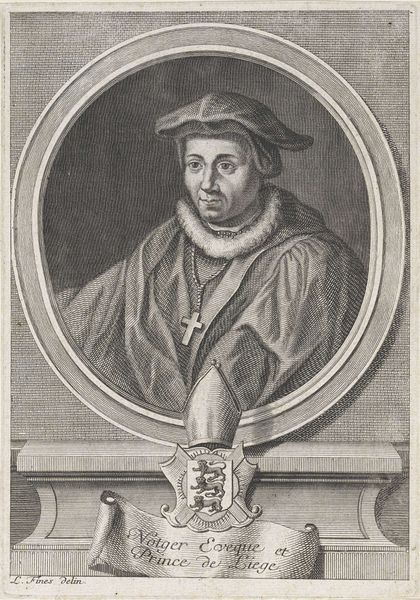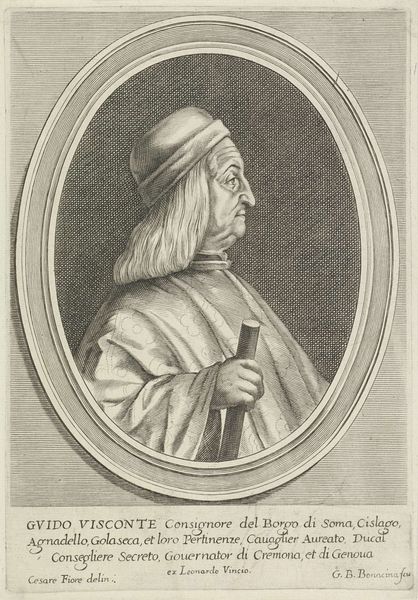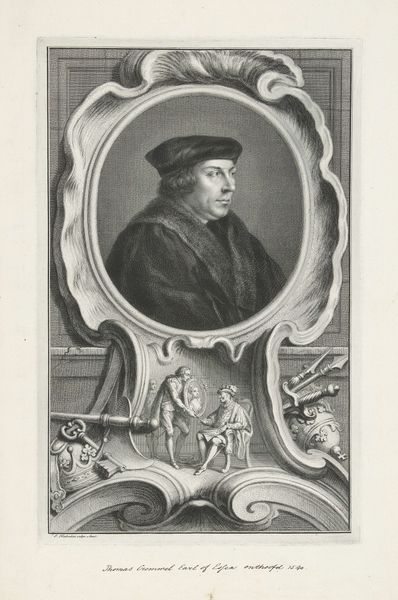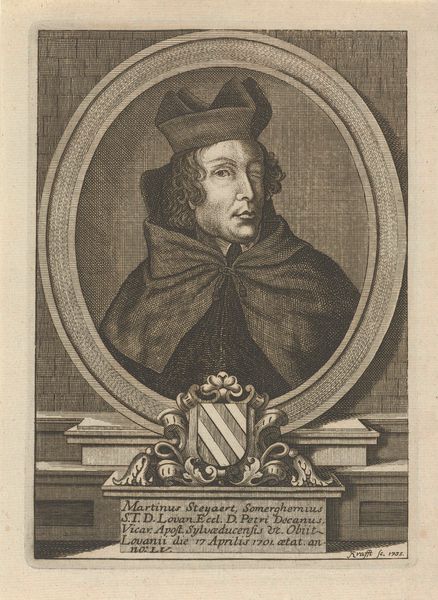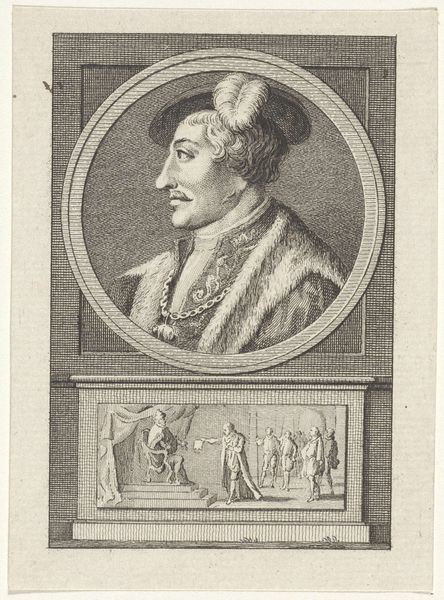
drawing, ink, engraving
#
portrait
#
drawing
#
ink
#
pencil drawing
#
romanticism
#
portrait drawing
#
engraving
Dimensions: height 235 mm, width 155 mm
Copyright: Rijks Museum: Open Domain
Editor: This is Reinier Vinkeles’s 1796 engraving of Ulrich Zwingli, held at the Rijksmuseum. The delicate lines create a somber, almost severe portrait. What can you tell me about this work? Curator: Well, beyond being a fine example of late 18th-century engraving, it really invites us to think about how figures of religious authority were being framed during a period of immense social and political upheaval. Consider Zwingli’s role in the Reformation and how, centuries later, he’s being memorialized. Is this portrait about preserving a historical legacy, or is it trying to actively shape a particular narrative about religious leadership in a time of revolution? Editor: That’s a great point. The rigid framing and almost classical bust-like presentation do seem to suggest a desire for a certain kind of authority. Does the romanticism tag apply more to the style or the subject, or perhaps both? Curator: Exactly! The “romanticism” isn’t just aesthetic; it's intertwined with the construction of heroism. How might the artistic style contribute to, or even challenge, established religious power structures, particularly during this post-Enlightenment era? It’s like Vinkeles is prompting us to re-evaluate how we define these historical figures. How might the cultural context have impacted Vinkeles' depiction? Editor: I see what you mean. Viewing it that way shifts it from a simple portrait to an active interpretation of a very complicated figure. Thinking about how it plays into questions of power and historical narrative really enriches the viewing experience. Curator: Agreed. It's a reminder that art is never neutral; it always reflects and refracts the social and political realities of its time.
Comments
No comments
Be the first to comment and join the conversation on the ultimate creative platform.
